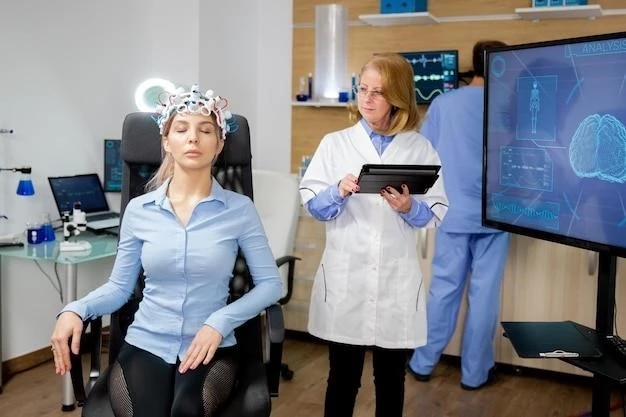Overview of Hereditary Neuropathy with Liability to Pressure Palsies (HNPP)
Today on the Internet‚ extensive information is available regarding Hereditary Neuropathy with Liability to Pressure Palsies (HNPP). It is a condition that affects peripheral nerves and is characterized by high sensitivity to pressure.
Definition and Background
Hereditary Neuropathy with Liability to Pressure Palsies (HNPP) is a peripheral neuropathy disorder that is characterized by peripheral nerves being highly sensitive to pressure. Individuals with HNPP may experience recurrent acute sensory and motor neuropathy‚ leading to symptoms such as numbness‚ tingling‚ and muscle weakness. This condition is inherited in an autosomal dominant manner‚ with genetic studies showing a link to the PMP22 gene. Diagnosis can be challenging due to the variability in symptoms‚ but electromyography and nerve conduction studies are key in confirming the condition.
Causes and Genetic Aspects of HNPP
The cause of Hereditary Neuropathy with Liability to Pressure Palsies (HNPP) is linked to genetic factors‚ particularly the PMP22 gene. This condition is inherited in an autosomal dominant manner‚ with individuals carrying a mutation in the PMP22 gene being at risk of developing HNPP.
Autosomal Dominant Inheritance
In Hereditary Neuropathy with Liability to Pressure Palsies (HNPP)‚ the condition follows an autosomal dominant inheritance pattern. This means that individuals with a mutated PMP22 gene have a 50% chance of passing the condition to their offspring. Genetic counseling is crucial for individuals with HNPP to understand the hereditary risk associated with the disorder.
Symptoms and Clinical Presentation of HNPP
Hereditary Neuropathy with Liability to Pressure Palsies (HNPP) presents with symptoms such as recurrent acute sensory and motor neuropathy. Patients may experience numbness‚ tingling‚ and muscle weakness due to the high sensitivity of peripheral nerves to pressure.
Recurrent Acute Sensory and Motor Neuropathy
Individuals with Hereditary Neuropathy with Liability to Pressure Palsies (HNPP) may experience recurrent acute sensory and motor neuropathy. Symptoms often include numbness‚ tingling‚ and muscle weakness‚ impacting multiple nerves or a single nerve.
Diagnosis of Hereditary Neuropathy with Liability to Pressure Palsies
Diagnosing Hereditary Neuropathy with Liability to Pressure Palsies (HNPP) can be challenging due to varying symptoms. Electromyography and nerve conduction studies are essential for confirming the condition.
Electromyography and Nerve Conduction Studies
For diagnosing Hereditary Neuropathy with Liability to Pressure Palsies (HNPP)‚ medical professionals rely on electromyography and nerve conduction studies. These tests help assess the electrical activity in muscles and nerves‚ aiding in confirming the presence of HNPP through specific patterns consistent with the condition.
Treatment for Hereditary Neuropathy with Liability to Pressure Palsies (HNPP) focuses on managing symptoms. Various strategies may include physical therapy‚ pain management‚ and assistive devices to improve quality of life for individuals affected by HNPP.
Treatment Options for HNPP
Managing symptoms is a key aspect of treating Hereditary Neuropathy with Liability to Pressure Palsies (HNPP). Techniques such as physical therapy‚ pain management‚ and the use of assistive devices may help alleviate symptoms and enhance the quality of life for individuals affected by HNPP.
Prognosis and Complications Associated with HNPP
Patients diagnosed with Hereditary Neuropathy with Liability to Pressure Palsies (HNPP) may experience varying long-term effects due to the recurrent nature of the condition. Understanding the potential complications associated with HNPP is crucial for managing the disorder effectively.
Potential Long-Term Effects
Hereditary Neuropathy with Liability to Pressure Palsies (HNPP) may result in varying long-term effects due to the recurrent nature of the condition. It is essential to understand and monitor these potential complications to ensure optimal management and quality of life for individuals affected by HNPP.

Research and Advancements in Understanding HNPP
Research on Hereditary Neuropathy with Liability to Pressure Palsies (HNPP) focuses on genetic studies and clinical trials to enhance understanding and treatment options. Stay informed about the latest advancements in managing this condition.
Hereditary Neuropathy with Liability to Pressure Palsies (HNPP) poses challenges in diagnosis and management due to its varying symptoms and recurrent nature. Research advancements in genetic studies and clinical trials play a crucial role in improving understanding and treatment approaches for individuals with HNPP. Continued research efforts are essential to enhance the quality of care and outcomes for patients affected by this condition.
Differentiating HNPP from Other Neuropathies
Hereditary Neuropathy with Liability to Pressure Palsies (HNPP) can be distinguished from other neuropathies based on its unique clinical features and genetic characteristics. To differentiate HNPP accurately‚ medical professionals consider specific diagnostic criteria and genetic testing to confirm the presence of this hereditary condition.
The prevalence of Hereditary Neuropathy with Liability to Pressure Palsies (HNPP) is estimated to be rare‚ affecting approximately 7-16 individuals per 100‚000. This condition‚ although uncommon‚ is well-recognized among pediatric and adult neurologists due to its distinctive nature in the differential diagnosis of compressive neuropathies.
Impact of HNPP on Patients and Families
The impact of Hereditary Neuropathy with Liability to Pressure Palsies (HNPP) extends beyond patients to their families. Understanding the challenges faced by individuals with HNPP can help in providing better support and resources for coping with the condition.
Support Services and Coping Strategies
Individuals with Hereditary Neuropathy with Liability to Pressure Palsies (HNPP) and their families can benefit from various support services and coping strategies. These may include seeking guidance from genetic counselors‚ joining support groups‚ accessing physical and occupational therapy‚ and utilizing assistive devices to manage daily activities. Developing effective coping mechanisms and staying informed about the condition can help enhance the overall well-being of individuals and their families affected by HNPP.

Prevalence and Epidemiology of Hereditary Neuropathy with Liability to Pressure Palsies
Hereditary Neuropathy with Liability to Pressure Palsies (HNPP) is considered a rare condition‚ with an estimated prevalence of 7-16 individuals per 100‚000. While relatively uncommon‚ the uniqueness of HNPP in terms of its clinical presentation makes it recognizable among neurologists treating compressive neuropathies.
Incidence Rates and Demographic Patterns
The prevalence of Hereditary Neuropathy with Liability to Pressure Palsies (HNPP) is estimated to be rare‚ affecting approximately 7-16 individuals per 100‚000. This condition is recognized for its distinctive characteristics in the differential diagnosis of compressive neuropathies and may present across various demographics.
Conclusion and Future Directions in HNPP Research
Hereditary Neuropathy with Liability to Pressure Palsies (HNPP) is a complex disorder that requires ongoing research efforts to improve diagnosis and treatment. Genetic studies and clinical trials play a crucial role in understanding this condition better. By enhancing our understanding of HNPP‚ researchers aim to develop more effective management strategies and potentially find novel therapeutic approaches to improve the quality of life for individuals affected by HNPP.
